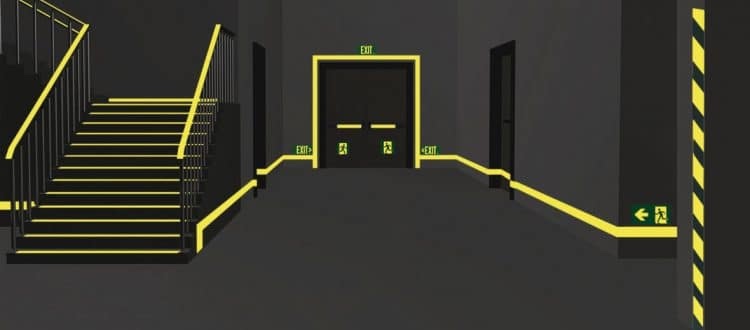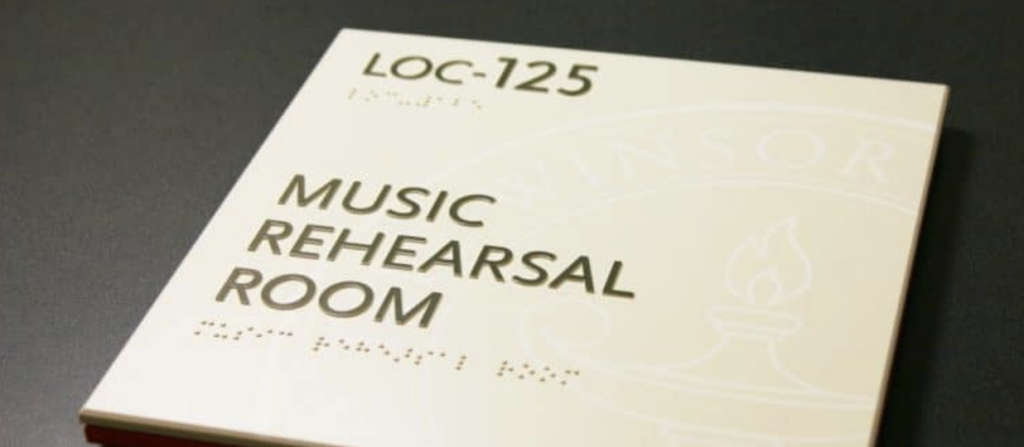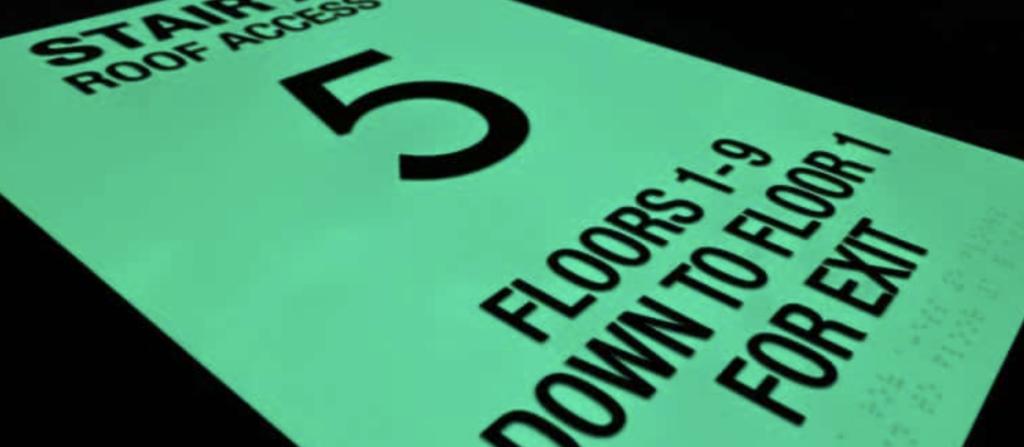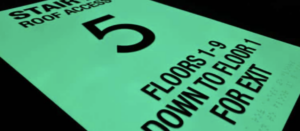
Have you ever wondered what it would be like to navigate in complete darkness? Here’s a challenge for you—but first, ensure someone is with you for safety. Go to the innermost part of your business, turn off the lights, close any blinds or window coverings, and then close your eyes. Now, try to make your way to the nearest exit. How long did it take? How many obstacles did you bump into?
Now, imagine you’re on the top floor of a tall, multi-story building. Close your eyes again and attempt to find your way down the stairs and outside. How well did you manage?
Now, picture doing this in an unfamiliar place where the power is out, the stairwell is dark and smoky, and the people around you are panicking. This scenario highlights the importance of being able to find a safe escape route from a building, which is crucial for the safety of employees, visitors, and customers. Yet, the quickest and most direct exit routes in many buildings are often not clearly marked, despite the fact that these markings can be a life-or-death matter.
American Permalight's Innovations
Marina Batzke, General Manager at American Permalight, notes that photo-luminescent exit path markings installed in the emergency staircases of the World Trade Center helped save lives on September 11, 2001. A NIST (National Institute of Standards and Technology) interview with World Trade Center survivors revealed that a third of those in Tower 1 and 17 percent in Tower 2 were assisted by these photo-luminescent markings.
This event led to new regulations by 2009, with the International Code Council (ICC) and the National Fire Protection Association (NFPA) incorporating luminous egress pathway markings into their codes. These nationwide requirements are even more stringent than the previous New York City MEA (Material Equipment and Acceptance) standards. “The UL-1994-Listing is much more stringent,” notes Ms. Batzke, who is part of the UL1994-Standards Technical Panel responsible for the UL Standard outlined in the nationwide Building Code requirements.
Know the Code
Building codes vary across the country and come with specific compliance requirements. While many of these codes are not new, local and state building inspectors and fire code officials are increasingly scrutinizing emergency egress regulations. For complete details, refer to the International Building Code (IBC) in Section 1024 of the 2009 and 2012 IBC, and Section 1025 of the 2015 IBC.
In brief, luminous markings are crucial for all exit enclosures on steps, landings, handrails, safe movement areas, obstacles, and doors in exit enclosures. This includes but is not limited to new construction and renovations of six stories and taller, as well as hotels, motels, office buildings, and healthcare facilities (especially hospitals). Check your state and local regulations to understand what is required in your area.
The nuances are important. For example, high-rise building emergency staircases must include photo-luminescent floor-level identification signs of at least 12×18 inches. Many state building codes also require the floor number to be marked with raised characters and Braille underneath. In some jurisdictions, the entire staircase identification sign must use all raised text with Braille underneath.
This is where photopolymer ADA compliant signage can benefit your client.
A Bright Opportunity
Your sign-making business is already well-positioned to provide superior photo-luminescent markings for steps, doorways, handrails, and more. To do so, you need products that comply with local and state regulations. However, not all “glow-in-the-dark” options are created equal, and the old New York City MEA standard has been deemed insufficiently bright. Remember, these markings are designed to help save lives in worst-case scenarios. Long-lasting, bright photo-luminescence is essential.
For signage providers, photo-luminescent signs and markings are an ideal complement to other internal signage, including photopolymer ADA-compliant signs. Photo-luminescent solutions range from handrail markings to metal strips for the leading edges of steps to high-performance glow-in-the-dark signs that mark doorways and exits. The appropriate material depends on the application, and while there is no one-size-fits-all solution, your business can easily identify and provide a complete range of solutions for any type of building.
Nova Polymers offers attractive, durable, bright, cost-effective UL1994-Listed photo-luminescent photopolymer that addresses nationwide needs. Both NovAcryl 250 and NovAcryl 150 PermaGlow materials, which absorb natural or artificial ambient light during the day, provide photo-luminescent emergency guidance when the lights go out—such as in a blackout or building fire.
NovAcryl 150 or 250 simply store the light and release it back when needed, providing photoluminescence for up to 90 minutes. This helps ensure orderly egress by identifying emergency stairwells, exits, fire extinguishers, and emergency aids.
Building Safety with American Permalight
Imagine how much easier it would be to find your way out of a darkened building if the floors, stairs, and wall edges had photo-luminescent markings. Review your local regulations and discuss with your customers the benefits of having luminous photopolymer materials in place in their buildings. Contact Nova Polymers and American Permalight to learn how you can help people see in the dark.



